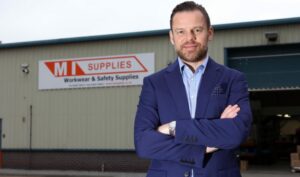When writing a business plan, what is meant by ‘short-term objective’, ‘medium-term objective’ and ‘long-term objective’?
The difference between short, medium, and long-term objectives is the time frame of each, and the implication this has on the nature of the objectives.
Short-term objectives are generally those relating to that financial year, in a time frame from now to the end of the year (ie up to a year away).
An example might be to raise turnover by 8 per cent and profit by 9 per cent by the end of the financial year.
Medium-term objectives are generally those that relate to a period from 18 months to three years or sometimes five years (whichever is appropriate for the organisation and people setting the objectives).
These objectives will therefore be broader, can be reviewed and may need to be amended with time. An example might be to relocate to brand new premises of 20,000 sq ft by March 2021.
Of course, the medium-term will become short-term with the passage of time and should be reviewed and updated with this in mind.
Longer-term objectives are generally more aspirational and so tend to relate to a period of five years plus. Often for owners and/or managers, these can tie closely in with personal goals and work-life balance. An example might be to sell the business for £5 million before the owner/manager turns 60.
Alex Ingham, managing director – MI Supplies
Alex Ingham, managing director of workwear and clothing site MI Supplies, put together a three-year growth plan called Project 2020 to get the company in gear.

Focusing on our website, we are extending the MI brand to overseas markets with sites designed specifically for the German and French territories in 2018.
We already have a very strong website in comparison to our competitors. Where we feel we can stand out, however, is by having multi-lingual sites across the UK and Europe.
Our first one for Germany is launching in just a few weeks’ time. We feel we have a great offer for the German market, where the majority of sites do not have the same breadth of brand and styles as we can provide.
We are working closely with our internal web team, very closely with our supplier base and have a team of people from our web platform company, Visualsoft, all working towards the same goal.
MI Supplies is also currently looking at each courier option for each EU country.
The reason for implementing Project 2020 was to spread our risk; not being dependent on one region, one country or one economy. Very often when one country in Europe has a downturn or recession, there are other countries that have an upturn. This is, we feel, a good plan to ensure we counter any downturns in certain countries.
We are looking at pushing our online turnover to £10 million per annum by the end of 2020 with the goal of hitting four million website visitors for our multi-site offering across Europe.
Simon Freer, owner – SAF Professional Cleaning Services Ltd
Working with a business coach can be the starting point for many business owners when it comes to objective setting. That was the experience of Simon Freer, owner of Surrey-based contract cleaning company, SAF Professional Cleaning Services Ltd.

I was operating as a sole trader when I first started a coaching programme with the Engineering Growth Club to set clear and measurable business objectives.
I found it challenging at first because we spent time looking at the business in detail across five dimensions – sales marketing, finance, talent and process – so we could drill down on what the business vision and purpose was: our USPs and what we wanted to achieve in the short, medium and longer term.
This is what I did this for each dimension, setting objectives in every area. These varied from sourcing the right talent, to establishing operational processes, to improving conversion rates for marketing and sales.
Having always been very reactive and basically being busy all the time but in an unstructured, non-goal orientated way, it was painful to be setting measurable goals, but adopting this as a discipline has transformed my business.
In the past 18 months, I’ve gone from being a sole trader on small contracts, to incorporating and then winning some very big contract customers. I now have a team of people working for me in the back office and I’ve doubled my turnover – all as a result of having clear, focused objectives which I reviewed and became accountable for.
Writing a business plan
However, it is imperative when setting business goals, whether they are short-term or long-term, that they follow the principle of SMART – Specific, Measurable, Achievable, Realistic and Time-bound, if they are to be truly effective.
A business plan is a great tool to help you methodically plot your business goals and objectives,
Simon Freer followed the ‘strategy on a page’ model rather than writing a chunky business plan,
‘This places everything that’s essential within a business plan on a single page and it’s much more like a living document that you can tweak and change on an ongoing basis,’ he says.
‘There’s no point having an extensive business plan that’s out of date by the time it’s finished and never reviewed again. Far better to have a condensed version that’s linked to your objectives. You will refer to it constantly and it always keeps you on track.’





